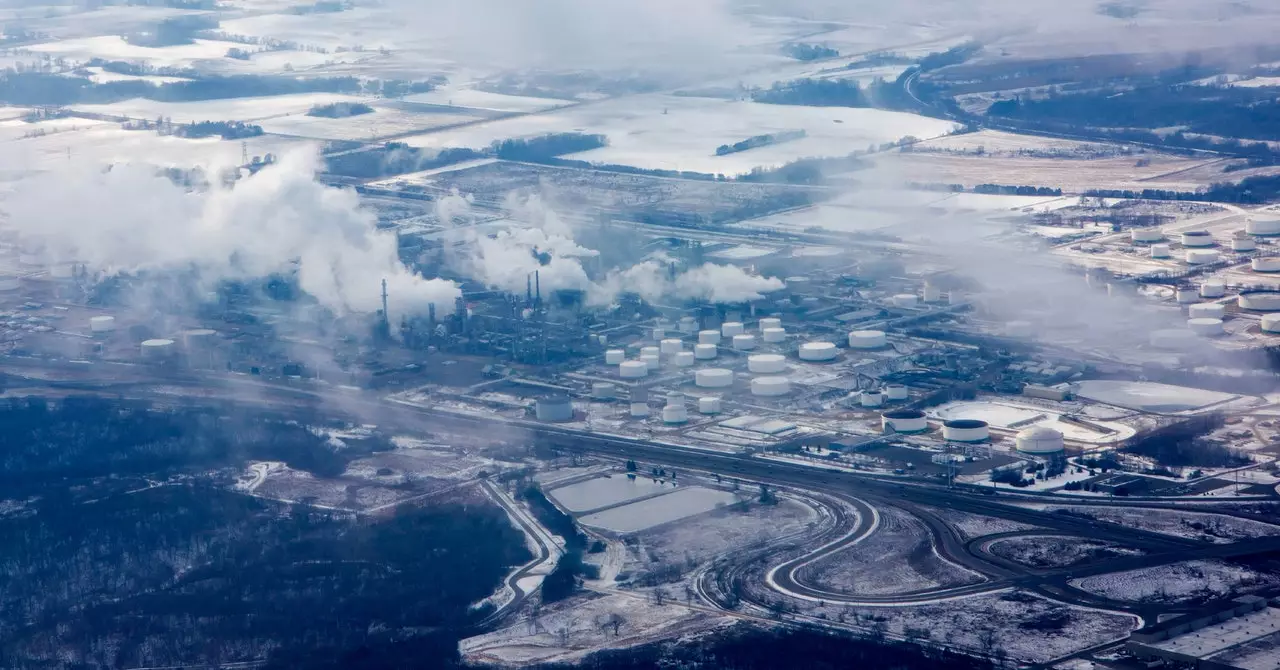As the world grapples with climate change and the imperative to reduce carbon emissions, the aviation industry stands at a critical juncture. Sustainable aviation fuel (SAF) has emerged as a promising alternative to traditional jet fuel, offering the potential to drastically cut down greenhouse gas emissions. This article delves into a significant announcement involving the Pine Bend Refinery in Minnesota, exploring its implications for the aviation sector and the broader movement towards a sustainable future.
Stretching over 13 miles from Minneapolis-St. Paul International Airport lies a 10-inch pipeline that could play a vital role in transforming the aviation fuel landscape in the Midwest. The Pine Bend Refinery, owned by Koch Industries and located in Rosemount, Minnesota, is set to blend SAF, produced from non-petroleum sources, into its conventional jet fuel. This developmental partnership has activated a proactive approach towards blending up to 60 million gallons of SAF-infused jet fuel by 2025, showcasing an ambition to significantly scale up to one billion gallons annually.
This production level not only aims to meet the local demand but also positions the Pine Bend Refinery as a potential supplier for airports across the United States and possibly on a global scale. By capitalizing on renewable materials and waste to create fuel, this initiative exemplifies innovative strides toward reducing aviation’s carbon footprint.
However, despite the promise that projects like these hold, significant challenges loom, primarily connected to financial frameworks that support them. The Biden administration’s Inflation Reduction Act established crucial tax credits and loans aimed at bolstering the SAF industry. Nevertheless, uncertainties arise as political shifts could threaten the longevity of these frameworks. Recent delays concerning federal loan tranches, as evidenced by Montana Renewables, suggest that the industry is on precarious footing.
With the potential rollback of federal incentives, observers express grave concerns about the viability of SAF projects. Scott Irwin, a professor of agricultural and consumer economics at the University of Illinois, characterized federal support as “on life support,” suggesting that without these financial incentives, the burgeoning SAF industry could face existential threats.
In light of such political uncertainties, industry leaders are calling for robust state-level support and alternative funding strategies to ensure that SAF remains a realistic pursuit. Existing state incentive programs and low-carbon fuel standards may provide some buffering; however, Irwin’s commentary raises a crucial question: who can fill the financial void if federal supports are dismantled? The success of SAF production hinges on clarity and stability in government funding, critical as companies like Flint Hills Resources and Delta Airlines forge partnerships anticipating the impact of sustainability on their business models.
Jake Reint, vice president of external affairs for Flint Hills Resources, echoed sentiments highlighting the mounting challenges in the SAF domain even before major political transitions. The logistics of safely transporting and blending SAF into existing fuel infrastructures require substantial planning. Pine Bend’s initiative, which includes specialty pumps needed for this process, indicates the intricate groundwork necessary to bring sustainability to fruition.
While the Pine Bend Refinery’s endeavor represents a significant step towards producing sustainable aviation fuel, the journey is fraught with challenges. The ambition to create an extensive SAF supply chain is commendable; however, it remains contingent on a stable regulatory environment and financial incentives. As the aviation industry veers towards sustainability, stakeholders must advocate for policies that will facilitate ongoing investment in this critical sector. The path forward is complex, but with concerted efforts across governmental and corporate spheres, there remains hope for a cleaner, greener future in aviation.
The evolving landscape of sustainable aviation fuels demonstrates not only the potential for environmental stewardship but also a necessary pivot for the aviation industry’s survival in a world increasingly conscious of its carbon footprint. The success of initiatives like Pine Bend could herald a new era in aviation, reinforcing the necessity of adapting to and investing in sustainable solutions.

